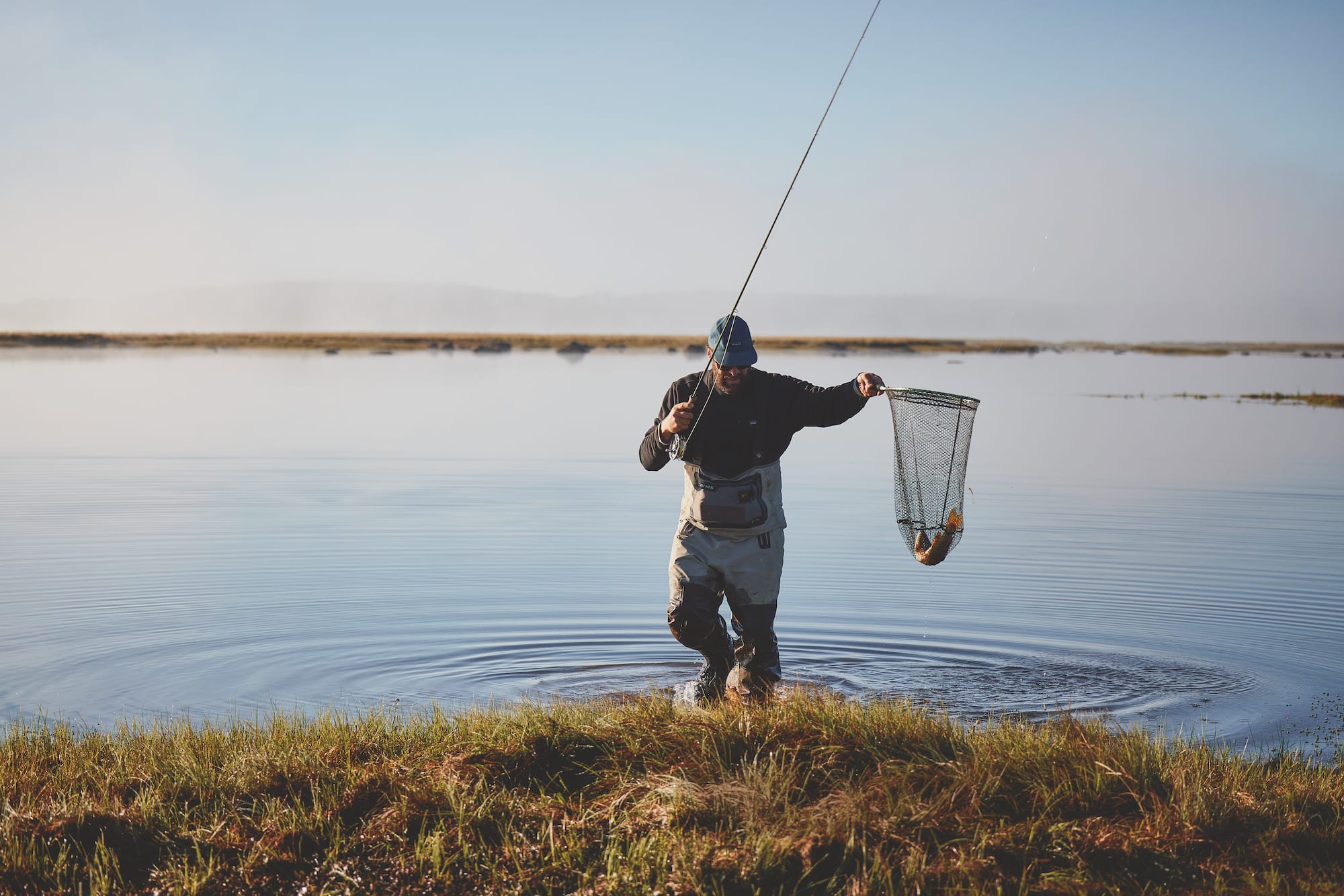
It takes a lifetime to learn how to think like a trout, to understand its universe. And yet Sam Shelley knows the object of his obsession is all in his mind.
Words Tabitha Carvan
Photography Samuel Shelley
WHEN Sam Shelley is fishing, that is what he’s thinking about. Not his fingers seizing up from the cold; not his hunger; not even the platypus looping around his feet.
He’s thinking about the brown trout he can see in front of him, its tail flicking out of the water as it feeds, nose down, in the dawn glow. Shelley doesn’t want to spook the fish, so he’s on his hands and knees, creeping through the weedy shallows, aiming to land a fly right in front of his target.
He’s thinking like a fish, too. That’s why he’s here in this particular spot in Tasmania’s Western Lakes today. If he was a fish, it’s where he would go, on this crisp spring morning in the Central Highlands, to mooch around in the newly flooded margins of Lake Kay, rich with grubs and snails and insects.
Shelley can lose hours, even a day, like this, thinking only of the task at hand. Because if you stop concentrating and start looking around you, even for a moment, well, that could be the one moment a fish takes your fly.


Photographer and fly fisher Sam Shelley; A prized brown trout.
“The thrill of the chase and strategy are at the core of the fly fisher psyche,” reads a Tourism Tasmania report into fly fishing, commissioned with the aim of encouraging more anglers to visit the state. I read out the report to Shelley. “These enthusiasts live and breathe fly fishing. It’s an integral part of their identity.”